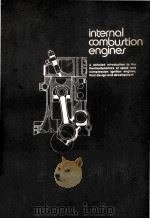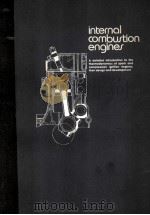《Internal combustion engine fundamentals》
| 作者 | Heywood;John B. 编者 |
|---|---|
| 出版 | McGrawHill |
| 参考页数 | 930 |
| 出版时间 | 1988(求助前请核对) 目录预览 |
| ISBN号 | 007028637X — 求助条款 |
| PDF编号 | 813819548(仅供预览,未存储实际文件) |
| 求助格式 | 扫描PDF(若分多册发行,每次仅能受理1册) |
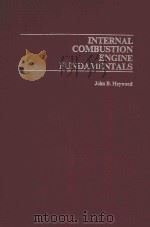
Chapter 1Engine Types and Their Operation1
1.1 Introduction and Historical Perspective1
1.2 Engine Classifications7
1.3 Engine Operating Cycles9
1.4 Engine Components12
1.5 Spark-Ignition Engine Operation15
1.6 Examples of Spark-Ignition Engines19
1.7 Compression-Ignition Engine Operation25
1.8 Examples of Diesel Engines31
1.9 Stratified-Charge Engines37
Chapter 2Engine Design and Operating Parameters42
2.1 Important Engine Characteristics42
2.2 Geometrical Properties of Reciprocating Engines43
2.3 Brake Torque and Power45
2.4 Indicated Work Per Cycle46
2.5 Mechanical Efficiency48
2.6 Road-Load Power49
2.7 Mean Effective Pressure50
2.8 Specific Fuel Consumption and Efficiency51
2.9 Air/Fuel and Fuel/Air Ratios53
2.10 Volumetric Efficiency53
2.11 Engine Specific Weight and Specific Volume54
2.12 Correction Factors for Power and Volumetric Efficiency54
2.13 Specific Emissions and Emissions Index56
2.14 Relationships between Performance Parameters56
2.15 Engine Design and Performance Data57
Chapter 3Thermochemistry of Fuel-Air Mixtures62
3.1 Characterization of Flames62
3.2 Ideal Gas Model64
3.3 Composition of Air and Fuels64
3.4 Combustion Stoichiometry68
3.5The First Law of Thermodynamics and Combustion72
3.5.1 Energy and Enthalpy Balances72
3.5.2 Enthalpies of Formation76
3.5.3 Heating Values78
3.5.4 Adiabatic Combustion Processes80
3.5.5 Combustion Efficiency of an Internal Combustion Engine81
3.6The Second Law of Thermodynamics Applied to Combustion83
3.6.1 Entropy83
3.6.2 Maximum Work from an Internal Combustion Engine and Efficiency83
3.7Chemically Reacting Gas Mixtures85
3.7.1 Chemical Equilibrium86
3.7.2 Chemical Reaction Rates92
Chapter 4Properties of Working Fluids100
4.1 Introduction100
4.2 Unburned Mixture Composition102
4.3 Gas Property Relationships107
4.4 A Simple Analytic Ideal Gas Model109
4.5Thermodynamic Charts112
4.5.1 Unburned Mixture Charts112
4.5.2 Burned Mixture Charts116
4.5.3 Relation between Unburned and Burned Mixture Charts123
4.6 Tables of Properties and Composition127
4.7Computer Routines for Property and Composition Calculations130
4.7.1 Unburned Mixtures130
4.7.2 Burned Mixtures135
4.8 Transport Properties141
4.9Exhaust Gas Composition145
4.9.1 Species Concentration Data145
4.9.2 Equivalence Ratio Determination from Exhaust Gas Constituents148
4.9.3 Effects of Fuel/Air Ratio Nonuniformity152
4.9.4 Combustion Inefficiency154
Chapter 5Ideal Models of Engine Cycles161
5.1 Introduction161
5.2 Ideal Models of Engine Processes162
5.3 Thermodynamic Relations for Engine Processes164
5.4Cycle Analysis with Ideal Gas Working Fluid with c v and c p Constant169
5.4.1 Constant-Volume Cycle169
5.4.2 Limited- and Constant-Pressure Cycles172
5.4.3 Cycle Comparison173
5.5Fuel-Air Cycle Analysis177
5.5.1 SI Engine Cycle Simulation178
5.5.2 CI Engine Cycle Simulation180
5.5.3 Results of Cycle Calculations181
5.6 Overexpanded Engine Cycles183
5.7Availability Analysis of Engine Processes186
5.7.1 Availability Relationships186
5.7.2 Entropy Changes in Ideal Cycles188
5.7.3 Availability Analysis of Ideal Cycles189
5.7.4 Effect of Equivalence Ratio192
5.8 Comparison with Real Engine Cycles193
Chapter 6Gas Exchange Processes205
6.1 Inlet and Exhaust Prccesses in the Four-Stroke Cycle206
6.2Volumetric Efficiency209
6.2.1 Quasi-Static Effects209
6.2.2 Combined Quasi-Static and Dynamic Effects212
6.2.3 Variation with Speed,and Valve Area,Lift,and Timing216
6.3Flow Through Valves220
6.3.1 Poppet Valve Geometry and Timing220
6.3.2 Flow Rate and Discharge Coefficients225
6.4 Residual Gas Fraction230
6.5 Exhaust Gas Flow Rate and Temperature Variation231
6.6Scavenging in Two-Stroke Cycle Engines235
6.6.1 Two-Stroke Engine Configurations235
6.6.2 Scavenging Parameters and Models237
6.6.3 Actual Scavenging Processes240
6.7 Flow Through Ports245
6.8Supercharging and Turbocharging248
6.8.1 Methods of Power Boosting248
6.8.2 Basic Relationships249
6.8.3 Compressors255
6.8.4 Turbines263
6.8.5 Wave-Compression Devices270
Chapter 7SI Engine Fuel Metering and Manifold Phenomena279
7.1 Spark-Ignition Engine Mixture Requirements279
7.2Carburetors282
7.2.1 Carburetor Fundamentals282
7.2.2 Modern Carburetor Design285
7.3Fuel-Injection Systems294
7.3.1 Multipoint Port Injection294
7.3.2 Single-Point Throttle-Body Injection299
7.4 Feedback Systems301
7.5 Flow Past Throttle Plate304
7.6Flow in Intake Manifolds308
7.6.1 Design Requirements308
7.6.2 Air-Flow Phenomena309
7.6.3 Fuel-Flow Phenomena314
Chapter 8Charge Motion within the Cylinder326
8.1 Intake Jet Flow326
8.2Mean Velocity and Turbulence Characteristics330
8.2.1 Definitions330
8.2.2 Application to Engine Velocity Data336
8.3Swirl342
8.3.1 Swirl Measurement343
8.3.2 Swirl Generation during Induction345
8.3.3 Swirl Modification within the Cylinder349
8.4 Squish353
8.5 Prechamber Engine Flows357
8.6 Crevice Flows and Blowby360
8.7 Flows Generated by Piston-Cylinder Wall Interaction365
Chapter 9Combustion in Spark-Ignition Engines371
9.1 Essential Features of Process371
9.2Thermodynamic Analysis of SI Engine Combustion376
9.2.1 Burned and Unburned Mixture States376
9.2.2 Analysis of Cylinder Pressure Data383
9.2.3 Combustion Process Characterization389
9.3Flame Structure and Speed390
9.3.1 Experimental Observations390
9.3.2 Flame Structure395
9.3.3 Laminar Burning Speeds402
9.3.4 Flame Propagation Relations406
9.4Cyclic Variations in Combustion,Partial Burning,and Misfire413
9.4.1 Observations and Definitions413
9.4.2 Causes of Cycle-by-Cycle and Cylinder-to-Cylinder Variations419
9.4.3 Partial Burning,Misfire,and Engine Stability424
9.5Spark Ignition427
9.5.1 Ignition Fundamentals427
9.5.2 Conventional Ignition Systems437
9.5.3 Alternative Ignition Approaches443
9.6Abnormal Combustion:Knock and Surface Ignition450
9.6.1 Description of Phenomena450
9.6.2 Knock Fundamentals457
9.6.3 Fuel Factors470
Chapter 10Combustion in Compression-Ignition Engines491
10.1 Essential Features of Process491
10.2Types of Diesel Combustion Systems493
10.2.1 Direct-Injection Systems493
10.2.2 Indirect-Injection Systems494
10.2.3 Comparison of Different Combustion Systems495
10.3Phenomenological Model of Compression-Ignition Engine Combustion497
10.3.1 Photographic Studies of Engine Combustion497
10.3.2 Combustion in Direct-Injection,Multispray Systems503
10.3.3 Application of Model to Other Combustion Systems506
10.4Analysis of Cylinder Pressure Data508
10.4.1 Combustion Efficiency509
10.4.2 Direct-Injection Engines509
10.4.3 Indirect-Injection Engines514
10.5Fuel Spray Behavior517
10.5.1 Fuel Injection517
10.5.2 Overall Spray Structure522
10.5.3 Atomization525
10.5.4 Spray Penetration529
10.5.5 Droplet Size Distribution532
10.5.6 Spray Evaporation535
10.6Ignition Delay539
10.6.1 Definition and Discussion539
10.6.2 Fuel Ignition Quality541
10.6.3 Autoignition Fundamentals542
10.6.4 Physical Factors Affecting Delay546
10.6.5 Effect of Fuel Properties550
10.6.6 Correlations for Ignition Delay in Engines553
10.7Mixing-Controlled Combustion555
10.7.1 Background555
10.7.2 Spray and Flame Structure555
10.7.3 Fuel-Air Mixing and Burning Rates558
Chapter 11Pollutant Formation and Control567
11.1 Nature and Extent of Problem567
11.2Nitrogen Oxides572
11.2.1 Kinetics of NO Formation572
11.2.2 Formation of NO2577
11.2.3 NO Formation in Spark-Ignition Engines578
11.2.4 NOx Formation in Compression-Ignition Engines586
11.3 Carbon Monoxide592
11.4Unburned Hydrocarbon Emissions596
11.4.1 Background596
11.4.2 Flame Quenching and Oxidation Fundamentals599
11.4.3 HC Emissions from Spark-Ignition Engines601
11.4.4 Hydrocarbon Emission Mechanisms in Diesel Engines620
11.5Particulate Emissions626
11.5.1 Spark-Ignition Engine Particulates626
11.5.2 Characteristics of Diesel Particulates626
11.5.3 Particulate Distribution within the Cylinder631
11.5.4 Soot Formation Fundamentals635
11.5.5 Soot Oxidation642
11.5.6 Adsorption and Condensation646
11.6Exhaust Gas Treatment648
11.6.1 Available Options648
11.6.2 Catalytic Converters649
11.6.3 Thermal Reactors657
11.6.4 Particulate Traps659
Chapter 12Engine Heat Transfer668
12.1 Importance of Heat Transfer668
12.2Modes of Heat Transfer670
12.2.1 Conduction670
12.2.2 Convection670
12.2.3 Radiation671
12.2.4 Overall Heat-Transfer Process671
12.3 Heat Transfer and Engine Energy Balance673
12.4Convective Heat Transfer676
12.4.1 Dimensional Analysis676
12.4.2 Correlations for Time-Averaged Heat Flux677
12.4.3 Correlations for Instantaneous Spatial Average Coefficients678
12.4.4 Correlations for Instantaneous Local Coefficients681
12.4.5 Intake and Exhaust System Heat Transfer682
12.5Radiative Heat Transfer683
12.5.1 Radiation from Gases683
12.5.2 Flame Radiation684
12.5.3 Prediction Formulas688
12.6Measurements of Instantaneous Heat-Transfer Rates689
12.6.1 Measurement Methods689
12.6.2 Spark-Ignition Engine Measurements690
12.6.3 Diesel Engine Measurements692
12.6.4 Evaluation of Heat-Transfer Correlations694
12.6.5 Boundary-Layer Behavior697
12.7Thermal Loading and Component Temperatures698
12.7.1 Component Temperature Distributions698
12.7.2 Effect of Engine Variables701
Chapter 13Eng ne Friction and Lubrication712
13.1 Background712
13.2 Definitions714
13.3Friction Fundamentals715
13.3.1 Lubricated Friction715
13.3.2 Turbulent Dissipation719
13.3.3 Total Friction719
13.4 Measurement Methods719
13.5Engine Friction Data722
13.5.1 SI Engines722
13.5.2 Diesel Engines724
13.6Engine Friction Components725
13.6.1 Motored Engine Breakdown Tests725
13.6.2 Pumping Friction726
13.6.3 Piston Assembly Friction729
13.6.4 Crankshaft Bearing Friction734
13.6.5 Valve Train Friction737
13.7 Accessory Power Requirements739
13.8Lubrication740
13.8.1 Lubrication System740
13.8.2 Lubricant Requirements741
Chapter 14Modeling Real Engine Flow and Combustion Processes748
14.1 Purpose and Classification of Models748
14.2Governing Equations for Open Thermodynamic System750
14.2.1 Conservation of Mass750
14.2.2 Conservation of Energy751
14.3Intake and Exhaust Flow Models753
14.3.1 Background753
14.3.2 Quasi-Steady Flow Models753
14.3.3 Filling and Emptying Methods754
14.3.4 Gas Dynamic Models756
14.4Thermodynamic-Based In-Cylinder Models762
14.4.1 Background and Overall Model Structure762
14.4.2 Spark-Ignition Engine Models766
14.4.3 Direct-Injection Engine Models778
14.4.4 Prechamber Engine Models784
14.4.5 Multicylinder and Complex Engine System Models789
14.4.6 Second Law Analysis of Engine Processes792
14.5Fluid-Mechanic-Based Multidimensional Models797
14.5.1 Basic Approach and Governing Equations797
14.5.2 Turbulence Models800
14.5.3 Numerical Methodology803
14.5.4 Flow Field Predictions807
14.5.5 Fuel Spray Modeling813
14.5.6 Combustion Modeling816
Chapter 15Engine Operating Characteristics823
15.1 Engine Performance Parameters823
15.2 Indicated and Brake Power and MEP824
15.3Operating Variables That Affect SI Engine Performance,Efficiency,and Emissions827
15.3.1 Spark Timing827
15.3.2 Mixture Composition829
15.3.3 Load and Speed839
15.3.4 Compression Ratio841
15.4SI Engine Combustion Chamber Design844
15.4.1 Design Objectives and Options844
15.4.2 Factors That Control Combustion846
15.4.3 Factors That Control Performance850
15.4.4 Chamber Octane Requirement852
15.4.5 Chamber Optimization Strategy857
15.5Variables That Affect CI Engine Performance,Efficiency,and Emissions858
15.5.1 Load and Speed858
15.5.2 Fuel-Injection Parameters863
15.5.3 Air Swirl and Bowl-in-Piston Design866
15.6Supercharged and Turbocharged Engine Performance869
15.6.1 Four-Stroke Cycle SI Engines869
15.6.2 Four-Stroke Cycle CI Engines874
15.6.3 Two-Stroke Cycle SI Engines881
15.6.4 Two-Stroke Cycle CI Engines883
15.7 Engine Performance Summary886
Appendixes899
AUnit Conversion Factors899
BIdeal Gas Relationships902
B.1 Ideal Gas Law902
B.2 The Mole903
B.3 Thermodynamic Properties903
B.4 Mixtures of Ideal Gases905
CEquations for Fluid Flow through a Restriction906
C.1 Liquid Flow907
C.2 Gas Flow907
D Data on Working Fluids911
Index917
1988《Internal combustion engine fundamentals》由于是年代较久的资料都绝版了,几乎不可能购买到实物。如果大家为了学习确实需要,可向博主求助其电子版PDF文件(由Heywood;John B. 1988 McGrawHill 出版的版本) 。对合法合规的求助,我会当即受理并将下载地址发送给你。
高度相关资料
-
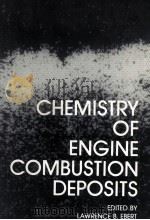
- CHEMISTRY OF ENGINE COMBUSTION DEPOSITS
- 1985 PLENUM PRESS
-
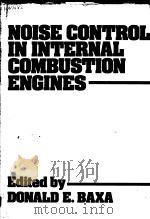
- NOISE CONTROL IN INTERNAL COMBUSTION ENGINES
- JOHN WILEY & SONS
-

- FUNDAMENTALS OF INTERNAL MEDICINE
- 1955 STAPLES PRESS
-

- Internal combustion engine fundamentals
- 1988 McGrawHill
-
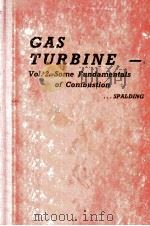
- SOME FUNDAMENTALS OF COMBUSTION
- 1955 BUTTERWORTHS SCIENTIFIC PUBLICATOS
-
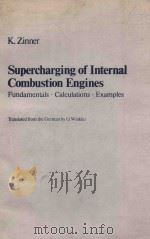
- SUPERCHARGING OF INTERNAL COMBUSTION ENGINES FUNDAMENTALS CALCULATIONS EXAMPLES
- 1978 SPRINGER-VERLAG BERLIN HEIDELBERG NEW YORK
-
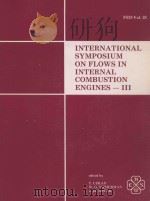
- INTERNATIONAL SYMPOSIUM ON FLOWS IN INTERNAL COMBUSTION ENGINES-Ⅲ
- 1985 THE AMERICAN SOCIETY OF MECHANICAL ENGINEER
-
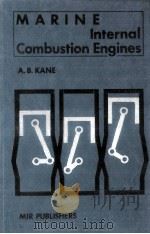
- MARINE Internal Combustion Engines
- 1984 MIR Publishers Moscow
-
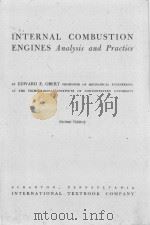
- INTERNAL COMBUSTION ENGINES ANALYSIS AND PRACTICE SECOND EDITION
- 1950 INTERNATIONAL TEXTBOOK COMPANY
-
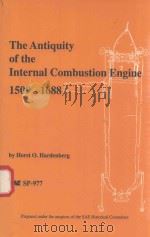
- THE ANTIQUITY OF THE INTERNAL COMBUSTION ENGINE 1509-1688
- 1993 COPYRIGHT
-
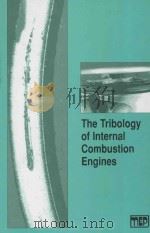
- The tribology of internal combustion engines
- 1997 Mechanical Engineering Publications
-
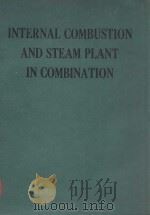
- INTERNAL COMBUSTION AND STEAM PLANT IN COMBINATION
- 1987 MECHANICAL ENGINEERING PUBLICATIONS
提示:百度云已更名为百度网盘(百度盘),天翼云盘、微盘下载地址……暂未提供。➥ PDF文字可复制化或转WORD
